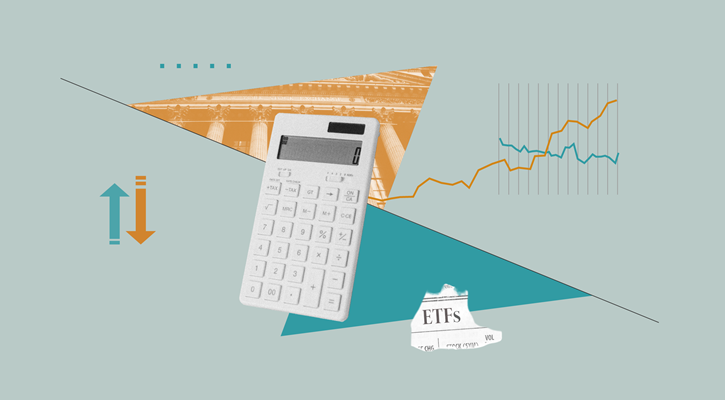TRANSCRIPT
Christine Benz: Hi, I'm Christine Benz for Morningstar.com. Morningstar's investor return data shine the light on investor behavior in terms of influencing the returns investors actually earn. Joining me to discuss some recent data on investor returns is Russ Kinnel, he's director of manager research for Morningstar.
Russ, thank you so much for being here.
Russ Kinnel: Good to be here.
Benz: This investor return data, it's really fascinating data, but there does tend to be a lot of confusion about what investor returns are. So let's talk about how they are different from those published total returns that we publish on Morningstar.com. The various trailing total returns, how are investor returns different?
Kinnel: That’s right; investor returns are essentially dollar-weighted returns and so they are different from a fund's official total returns. And the way to think about the difference is it's really telling you, how well did investors use the fund? How good was their timing? So if you see that investor returns are fairly close with total returns then it tells you that their timing was pretty good. Maybe [there were] kind of steady flows or whatever. But if there is a significant difference, if investor returns are significantly worse, it tells you that one way or the other, the timing wasn't good and therefore maybe people weren't using it that well. Sometimes it could be that they didn't understand what was going on or something else, but something didn't quite click.
Benz: So a common pattern is maybe a fund has had really great returns in the past. Of course when we look at flow data we often see that after that great return period, is when we see the dollars flow in. There you would see the investor returns be lower than the fund's published total returns.
Kinnel: That’s right. We often say "don't chase performance," and investor returns really put an actual number on that. They show that this fund may have had great returns, but a lot of people came in too late and often because markets are cyclical, the things that worked well for that fund at that time, they may go out of favor--maybe now they are overpriced. So unfortunately there can be an unhealthy cycle for the people who chase performance.
Benz: OK. So we look at this data in a few different ways. You can see it on a fund-by-fund level on Morningstar.com. But you also periodically take a look at some aggregated data looking at how investors are doing on average, in aggregate, in terms of earning their funds' returns. Let's talk about how the data can be pretty time-period sensitive, and that can cause some oddities when you look at investor returns.
Kinnel: That’s right. There are some quirks, and that goes for both individual funds and aggregate numbers. Because if you think about various time periods, there are times when a lot of money is going into funds, times when a lot of money is going out, and because of that, the time periods, we'll see significant differences even when we roll it up, even over longer time periods. So I look at five-year periods, 10-year periods. Even then you'll see significant differences, and I think one caution I would put on those for individual funds and overall is just don't read too much into any one time period. Because I do think that there is a big end-date bias, and I don't want to conclude investors became much smarter or much dumber over this time period. I think it’s much more a matter of the timing worked better or did not. I think to get a better picture you want to look at multiple time periods.
Benz: OK. So your most recent run of this data you are going to be featuring inMorningstar FundInvestor this coming month. Let's talk about what you saw when you looked at the time period, the 10-year time period ended at the end of 2015.
Kinnel: That’s right, for that time period the average investor lagged the average fund, and this is all funds, by about 53 basis points. Which, based on the historical trends, is actually a pretty good number. I would be happy if that's how it continued. That means they really didn't lag by that much. But again, back to that point about end-date bias: end of 2015, you go back to the start of that time period. We're a couple years after the earlier 2000-02 bear markets. So, what that meant was money was coming back into funds, not just bond funds, but equity funds, and that meant it was actually a pretty good time period.
Where you see the reverse, where things are really bad more often is at pivot points, because that's where we tend to mess up. We tend to after a bear market, maybe we sell, and of course that was the best buying opportunity. Or after a rally we buy, when maybe that was the best selling opportunity. So the more recent--the last couple of time periods have been the start date was after a bear market, and so you had a sort of sweet spot where the market had started to rally, but stocks were still relatively decently priced. So that was a good time to invest, and that shows up in those investor returns.
Benz: You mentioned that after those inflection points is when we tend to see investors mistime their purchases and sales the most. Let's go back to the end of the most recent bear market. The pattern you saw there was investors leaving equity funds, right?
Kinnel: Yeah, unfortunately for the most part people did a really poor job of timing it. It was scary--I mean, it's easy to sit here and now and say it was easy. But a lot of people thought the end was nigh. So if you go back to that time period, we had a lot of money going out of equity funds in '08 and '09, and of course, '09 was maybe one of the greatest buying opportunities of a generation. So we see when fear and greed hit, that's when we make bad decisions.
Benz: Right. One concurrent trend that I know you and the team have been tracking is the fact that many investors have been swapping out of mutual funds and that's what you're looking at here, when you're looking at this investor return data. They've been getting out of mutual funds and into exchange-traded funds. To what extent does that influence the patterns that we see here?
Kinnel: I think that has an effect for sure, for U.S. equities anyway. Because we have seen significant money going out of open-end U.S. equity funds, mostly out of the active side, and into ETFs. And from an investor returns standpoint if we were to combine those, presumably that’s something close to a net neutral, but just looking at the open-end side it looks a little more like just a pure sale.
Benz: OK. You brought a couple of funds that I think nicely illustrate investor returns. Let's start with kind of a good-news story, a fund where investors have earned a good share of the fund's actual returns. They've timed their purchases relatively well. This is Royce Special Equity; let's talk about what's going on there.
Kinnel: So when you want to figure out investor returns, the first thing I'd want to do is go to the beginning of the time period, because that's usually the telling moment. And in fact, the telling story for Royce Special Equity was 2008--the fund lost a little less than 20%, which was absolutely brilliant. Very few equity funds lost less because Charlie Dreifus is a very value-conscious investor, very balance-sheet-focused investor. And therefore it's a very defensive strategy and so his fund lost a lot less. And if you look at flows, the fund had a trickle of inflows in '08, a little more inflows in '09, and kind of steady flows for a while until it closed a few years later. And that’s really the ideal situation.
So many other funds threw off their investors. In other words, they lost a lot in '08 and that meant people then sold maybe in early '09 right at the bottom. So even though those funds may have then rebounded sharply and over maybe three years recouped those '08 losses, for many investors it didn't matter because they were already out of the funds. But Royce Special Equity shows the benefits of less-volatile funds. I think that’s one broader lesson we can all learn is we do better with less-volatile funds because again, they don't inspire as much fear or greed.
Benz: Right. You also mentioned that Royce fund has been closed. I'm wondering if you've examined this question of whether closures help save us investors from our own worst instincts.
Kinnel: Right. So ostensibly managers are generally closing funds because they don't want their strategies to be diluted, so it may help on the total return side. But it maybe even more helpful on the investor return side because when funds close if you think about it, it's when they are getting a significant increase in inflows and that is usually after they have had a really good run. So when a fund closes the new investors, it's essentially preventing the hot money from coming in, and that probably also helps total returns when the fund cools off, because it means hot money doesn't flow out so much. And that doesn't--that puts less pressure on the manager to sell stocks. So there's really a lot of good things happening when a fund closes to new investors at the right time.
Benz: So the hot money doesn’t flow out of the fund because investors know that they won't be able to get back in.
Kinnel: And it didn’t get there in the first place. If you look at a fund like Fairholme, that probably should've closed. The marginal investor that came in towards the end of Fairholme's great run was a very different investor from the people who had gotten in early. So you have--your shareholder base is changing. Hot money is coming in, and of course, if someone has just come in near the end, all they were looking for was quick returns, judging you by one-year performance. Now you have a bad one-year performance, naturally that money is going to go out.
Benz: OK. You brought a fund that illustrates kind of the opposite performance pattern. You mentioned the funds that had that bad performance during the financial crisis. In some cases had their investors capitulate. So this is Franklin Mutual Beacon; let's talk about that fund and how its investor returns look relatively worse.
Kinnel: I chose it in part because it's not sort of the obvious high-risk strategy. It's not piling into the most aggressive stocks out there. It's really got some conservative elements to it, yet it still lost 40% in '08. So this is a fund that in some ways is somewhat conservative and I think investors probably thought it would lose less in a down market. Instead it lost a little more in a down market. So what that meant was money steadily flowed out of the fund. It flew out in '08, '09, and just kind of continued to go out. So the fund led to a much poorer investor experience.
If you look at the 10-year investor returns, because Royce Special was used well, and Franklin Mutual Beacon less well, you had nearly 800 basis points in annualized total return difference in investor returns. So you had a confluence of good manager behavior, good investor behavior in one, and the opposite in the other. So I think it's kind of striking to see just how big at the end of the day that difference can be.
Benz: OK. Russ, fascinating research I'll look forward to reading your full report when it comes out. Thank you so much for being here.
Kinnel: You are welcome.
Benz: Thanks for watching. I'm Christine Benz for Morningstar.com.





















